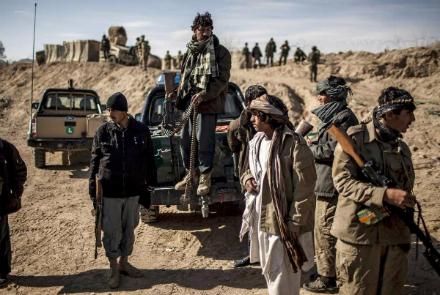The Afghan government should reject proposals to create a new militia with inadequate training and oversight, Human Rights Watch (HRW) has warned.
According to the watchdog organization, Western diplomatic sources in Kabul told Human Rights Watch that President Ashraf Ghani is considering establishing a defense unit modeled on the Indian Territorial Army, an auxiliary force comprising personnel who serve on a short-term contract basis with the regular armed forces.
The NATO Resolute Support Mission is believed to support such a local security force in Afghanistan.
An Afghan Territorial Army with reduced training and potentially less oversight risks being yet another abusive militia operating outside the military’s chain of command, Human Rights Watch said.
If approved, the Afghan government is expected to determine the location of a pilot project by September 20, 2017, reported HRW.
“The Afghan government’s expansion of irregular forces could have enormously dangerous consequences for civilians,” said Patricia Gossman, senior researcher at Human Rights Watch in Afghanistan.
“Instead of creating additional local forces, which are hard to control and prone to abuses, the Afghan government with US and NATO support should be strengthening training and oversight to ensure that all forces respect the law,” she said.
In recent years, the Afghan National Defense and Security Forces have relied on militia forces such as the Afghan Local Police (ALP) to “hold” local territory reclaimed from the Taliban or insurgent groups belonging to Daesh.
The ALP, established in 2010, was meant to serve as a local defense force. While these forces have gained some local support as a result of recent reforms, in many localities these forces have been responsible for numerous abuses against civilians, as well as summary executions of captured combatants and other violations of international humanitarian law, HRW reported.
The proposed Afghan Territorial Army would ultimately replace the Afghan Local Police as a defense force at the local level. There is concern that existing Afghan Local Police units could remain armed as militia forces, the watchdog organization stated.
They suggested however that instead of creating a new militia, Afghan authorities should improve the training and capabilities of its existing troops, and hold accountable those responsible for abuses.
“The Indian Territorial Army, the model for this proposed defense force, has been deployed to support Indian counter-insurgency forces in Jammu and Kashmir. Territorial army personnel have been implicated in serious abuses, and its irregular status has contributed to a lack of accountability,” read their report.
HRW stated that the Afghan government has been unable or unwilling to hold powerful strongmen accountable for abuses, including those who command Afghan Local Police units or other militias. “It’s not clear how the government intends to ensure that new Afghan Territorial Army units, whose members will be paid less than their army counterparts, won’t fall into the same pattern,” their report read.
While the territorial army would operate under a regular army corps commander, diplomatic sources told Human Rights Watch that Afghan officials involved in the discussions have expressed concern about the force becoming used by powerful strongmen, or becoming dependent on local patronage networks.
“There is also concern that the new force could replicate the criminality that many Afghan Local Police units exhibited, and clash with other government forces and militias over control of territory and smuggling routes,” the watchdog group said.
In addition to the proposed Afghan Territorial Army, the Afghan government is considering creating a new 15,000-strong tribal militia, under the Ministry of Tribal and Border Affairs, currently headed by former governor Gul Agha Sherzai.
The model for such a militia appears to be those established along ethnic lines by the late President Mohammad Najibullah in the late 1980s and early 1990s. Members of those militia forces were responsible for serious human rights abuses, HRW stated.
“There is a long, unsavory history of using tribal and irregular militias in Afghanistan, and it has led to egregious crimes without accountability,” Gossman said.
“Too often they have inflamed conflict rather than provide security.”


